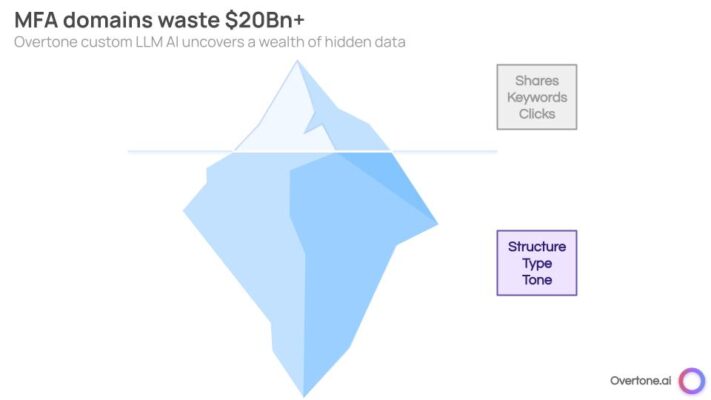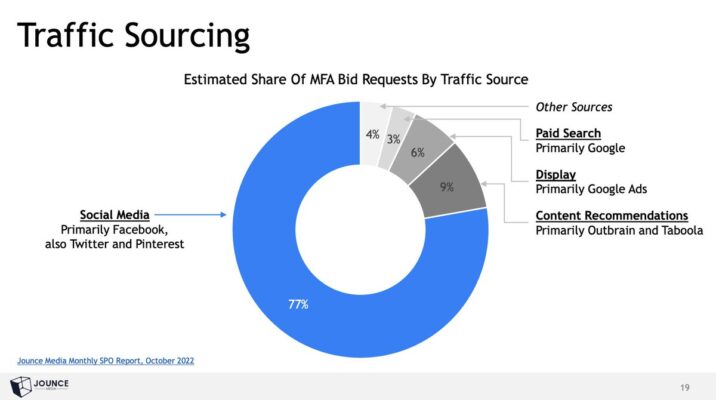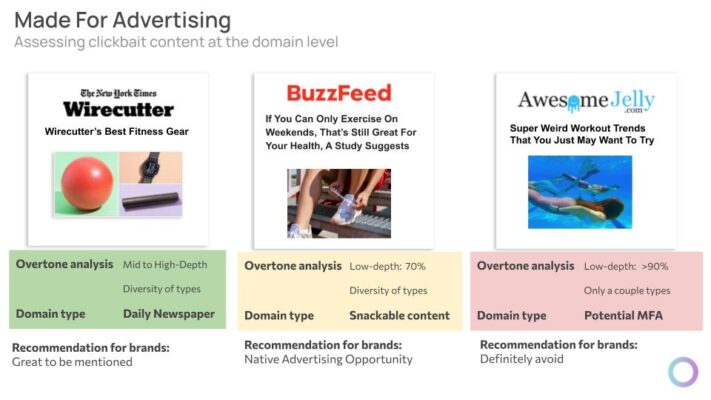It’s the kind of article that you – almost certainly – click away from once you see it. You probably regret ending up there in the first place
A click-baity headline, some fluffy, uninspired text, a spray of SEO keywords, and lots of pop ups and links to more of the same.
CTR, CTR, CTR – Click to Raise

You search for socks. Later on social media, lo and behold – socks – a review of the best ones. Humor the thought, now a new article catches you: the pros and cons of sleeping with your socks on. It’s pretty harmless (and in case you’re interested, the conclusion is “it depends”). Fine.
What’s not fine is the cloak and dagger industry pulling sensible advertising, marketing and publishing dollars away from valuable content and its authenticity readers expect. There is little incentive to clean up the internet as long as the metrics are good, yet readers slowly get more jaded by the infinite Times Square that is vying for our eyeballs. Feeling baited and fooled, their attempt to knock your socks off instead leaves you contemplating going barefoot.
Enter the world of “Made for Advertising” articles.
Before talking about what Made for Advertising (MFA) is, first it’s important to distinguish what MFA isn’t.
- It isn’t independent product reviews, sponsored content or affiliate product links that reward publishers a referral incentive if you do end up buying those socks.
- It isn’t native advertising, an acceptable practice that enables brands to support publishing by purchasing an opportunity to gain your attention with branded content that extends the article and typically has a similar look and feel as the editorial. Socks make great stocking stuffers. Top 10 sock brands commissioned by the third one on the list.
- It isn’t even the ads that consider the current moment, coupled with your behaviors elsewhere online to feel like a coincidence. “I was just talking to my friend about socks.” Privacy regulation is finally rounding the corner with GDPR compliance and 3rd Party Cookie deprecation.
MFA uses these same programmatic ads wall-papered, looping and popping up on the page, but the structure, type and tone of the content ranges from mindless to problematically unfounded so it cheats the entire system.
Ad fraud has arguably existed since the internet’s inception, given that anyone can create a landing page on the internet, but notable beginnings were around click fraud in Pay-Per-Click advertising. Click farms were tightly quelled by the large search engines to protect one of the most heartening intrinsic signals – intent.
Today, in 2023, that intent has been exploited with no end in sight, especially with generative AI giving it even more momentum. New sites are systematically popping up in droves yet, unlike direct-to-consumer brands, these are MFA sites that are here today, gone tomorrow. It’s quite easy to land here from an authentic digital experience, spawning off a keyword search and/or social media interaction.
Numbers. Crunch. Crunch. Crunch. How big of a deal is this?
The Association of National Advertisers recently estimated MFA issues to be a $20Bn problem. And that is conservative based on the contained universe it considered. Programmatic capabilities are reaching televisions, out-of-home billboards and audio channels. According to WARC’s Global Ad Spend Outlook 2023/24, global spend will hit $1 trillion for the first time in history, with more than half going to just 5 companies – Alibaba, Alphabet (owner of Google and YouTube), Amazon, ByteDance (TikTok and Douyin) and Meta (Facebook and Instagram). Knowing MFA is eating up, shockingly, at least 15% of companies’ marketing budgets, it is slated to potentially create a $150B deficit across the industry, producing diminishing returns.

At recent industry conferences in publishing, advertising and tech, Generative AI possibilities headlined every stage. The takeaways to ponder were job security, governance, detection and improved metrics for retention and attention. But what about intention? From these intertwined industries, one in five clicks is potentially MFA. There is a lot of finger pointing, and intention and ethics will come to the forefront, as to who gets to hold the proverbial pen where ad dollars are concerned.
If you can’t measure it, you can’t manage it.
Peter Drucker
Ok – so what is the advertising industry measuring exactly? Currently, it still mostly studies post-engagement metrics. Clicks, likes and shares that are managed by the big tech platforms. Those are all fine and good, but if that is all we have, we leave room for disingenuousness that only gets us to those metrics. Those metrics lead industries to manage only what is measured.

I’m sure it comes as no surprise, these derivative metrics have been gamed despite continued rules by committee and sophisticated platform intelligence between publishers and advertisers.
Recent research from Chris Kane at Jounce Media found ad placements appearing on MFA sites aren’t actually turning to sales, in fact, quite the opposite, now associating the brand with the overall negative experience.

So money is being swindled from advertisers as well as legitimate publishers, from the biggest media conglomerates enduring round after round of layoffs to the smallest local news outlets fighting from becoming a news desert. It’s lose-lose.
“MFA sites are a great working example of a programmatic system being gamed,” Damon Reeve, CEO of the U.K-based publisher alliance Ozone, told Digiday. “Advertisers don’t like them, publishers don’t like them, and yet advertiser budgets still flow to them. And that’s because they are designed to perform according to the ad-tech metrics that advertisers value for their digital budgets.”
Manufacturing money through ad arbitrage is the game. These MFA site owners typically sit after an article you’ve read. They pay money for your click, but then they make more money than they paid by blanketing their clickbait article with ads, each of which affords them a small profit. The original publisher gets a small cut based on the clicks they generate, and the tech platform likely gets a cut. Everybody blames each other for problems in the system. And for you – it is death by a thousand cuts.
What can we do about it? Large Language Models (LLMs) – Read, Read, Read
No one actually seeks out these sites organically and nobody actually likes this experience. We defund MFA using ethical AI that can catch this stuff at speed and scale.
Content flow can be complex by way of handshake partnerships and algorithmic game theory. Overtone inherently understands editorial distinction. We can find likely MFA content by studying how it’s written. Largely templated, generic content with lots of SEO and little of interest to real human readers? Red flag.
We can roll this up across multiple pages to look at a whole domain so that advertisers can block bad actors that intend to swindle them.
Not every article needs to be gunning for a Pulitzer. With the advancement of LLMs, we can now determine the intention of an article – how and why it was created, if it’s truly resonating at the right time, right place, as well as the attention that it garners. Overtone detects authenticity pointing out MFA qualities. We all learned in school how to stop a bully – don’t give them a platform and stop paying them attention. It is a privilege that the world’s information is at our fingertips, and we can take responsible and ethical measures to ensure it stays that way. Esteemed critic reviews, independent product reviews as the New York Times Wirecutter or Oprah’s Favorite Things…Buzzfeed or PopSugar with native listicles, we can differentiate these articles from domains like Awesome Jelly or TwentyTwoWords.

Because our models look at the content only, we are GDPR-compliant, privacy first – increasingly important in a time when LLMs can know a little too much, leaking sensitive corporate and personal details. We read text at the speed and scale of generative AI, while companies doing manual checks of different domains can never keep up with the number of new websites created every day (in addition to the difficulty of having humans create a system that is repeatable and bias-free). By the time a team of humans flag a site as MFA, the MFA creator has already gone on to create three new ones.
The future of the internet looks like this: less MFA, more articles that actually care about their readers, supported by advertisers who can detect authenticity and respect our privacy. A better world for publishers and for advertisers, where real content connects with real people. To return to Peter Drucker: we can now manage what has long seemed unmeasurable.

